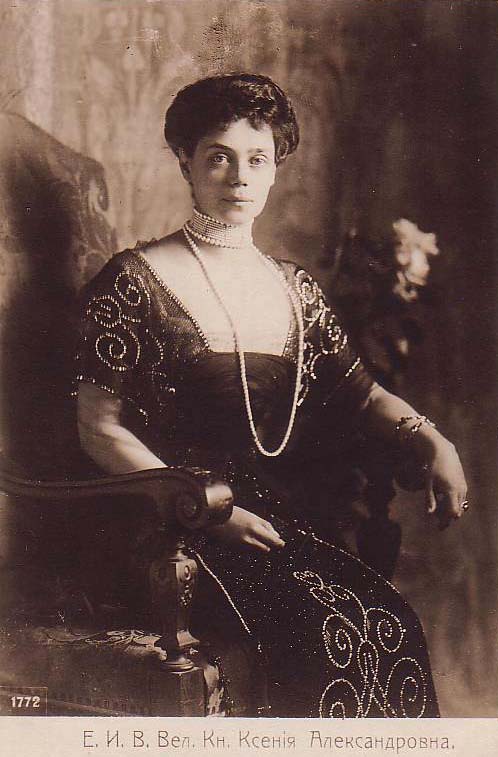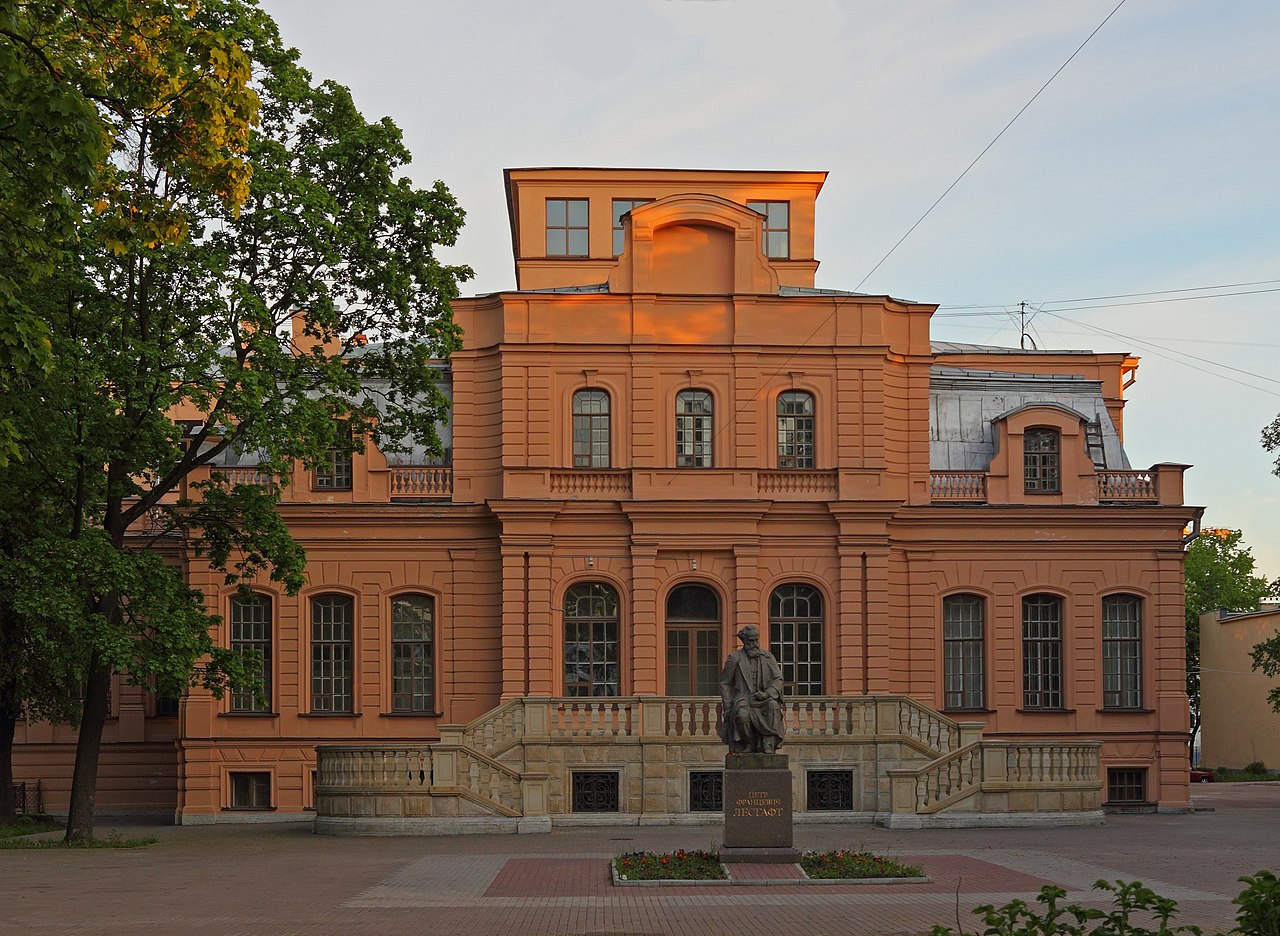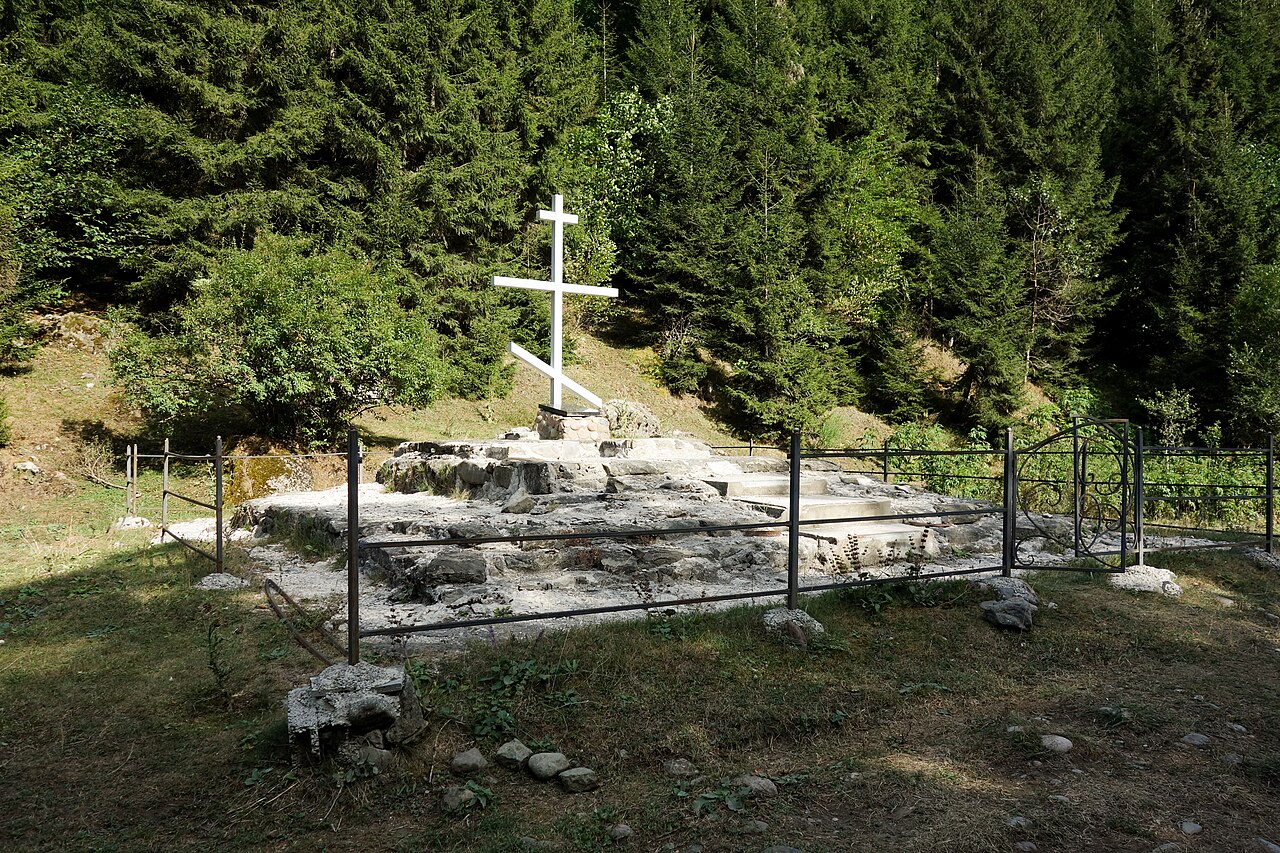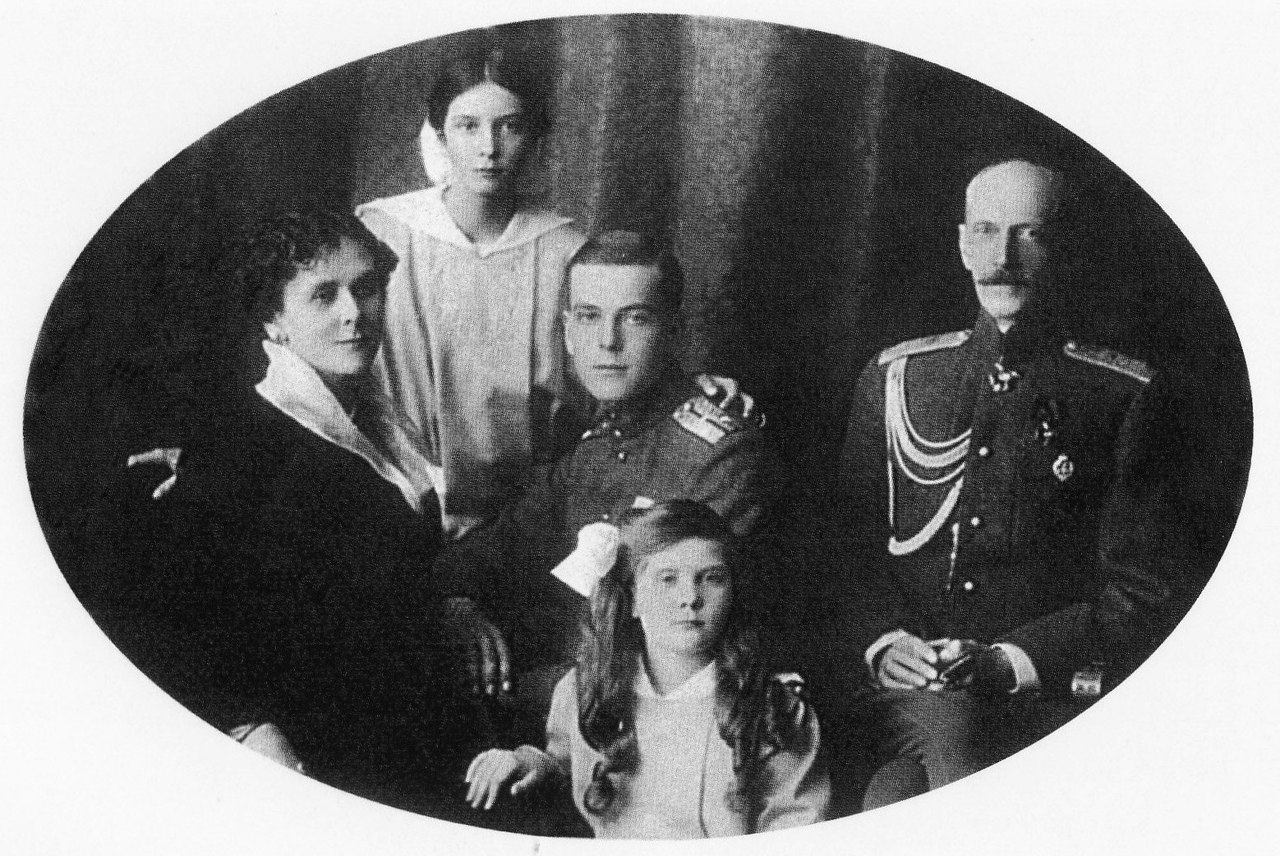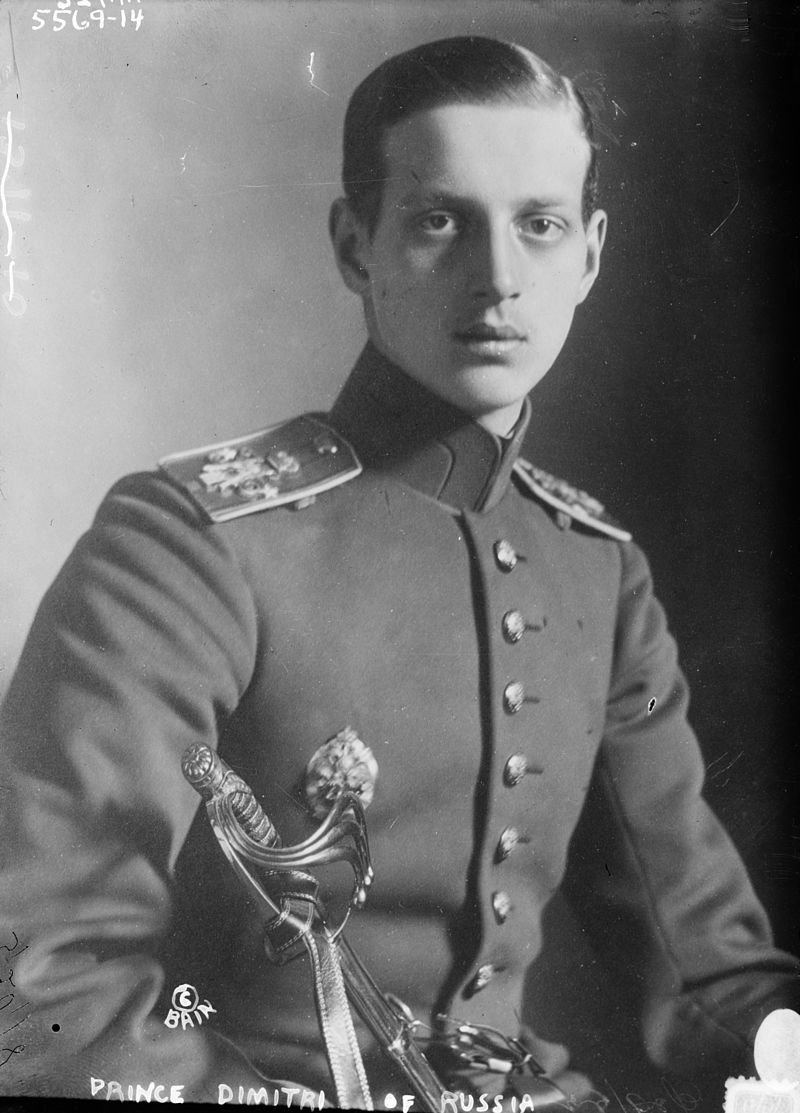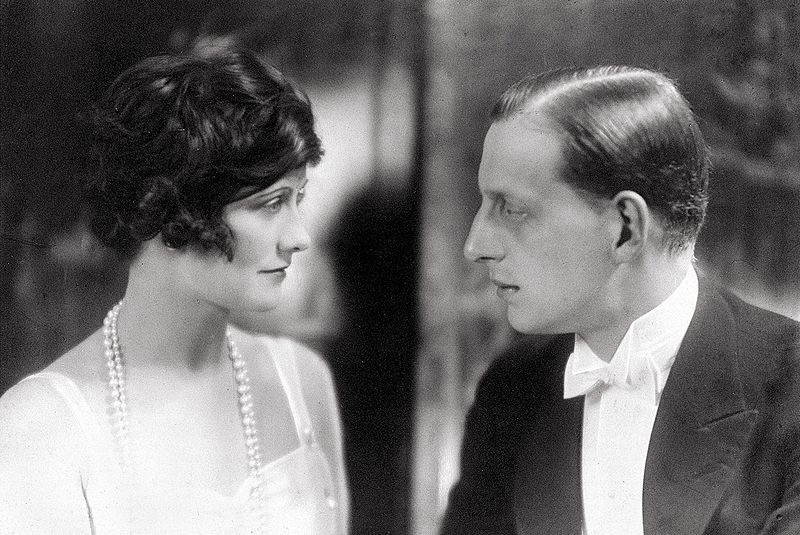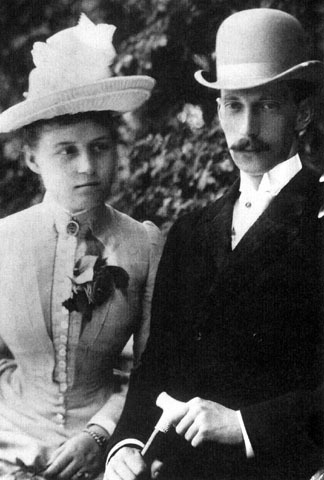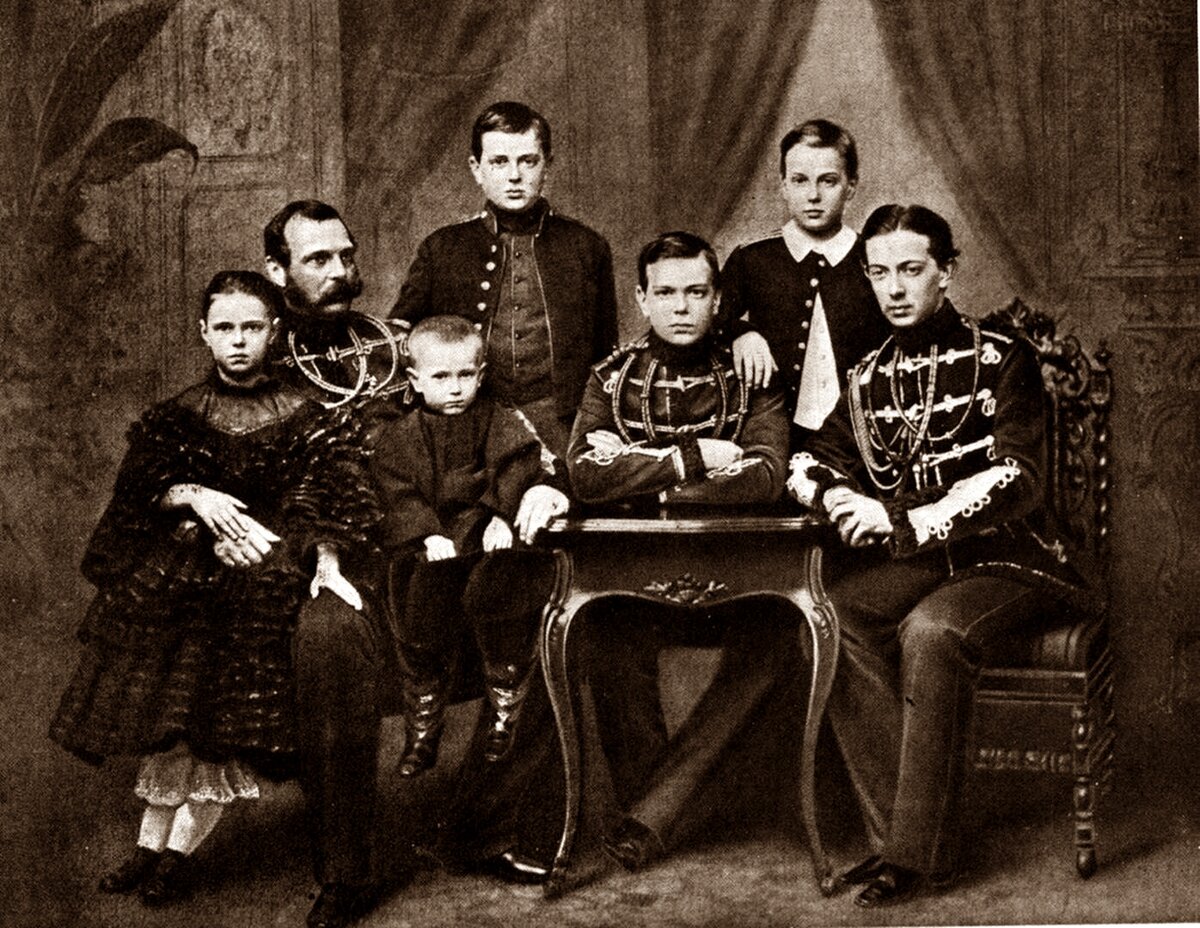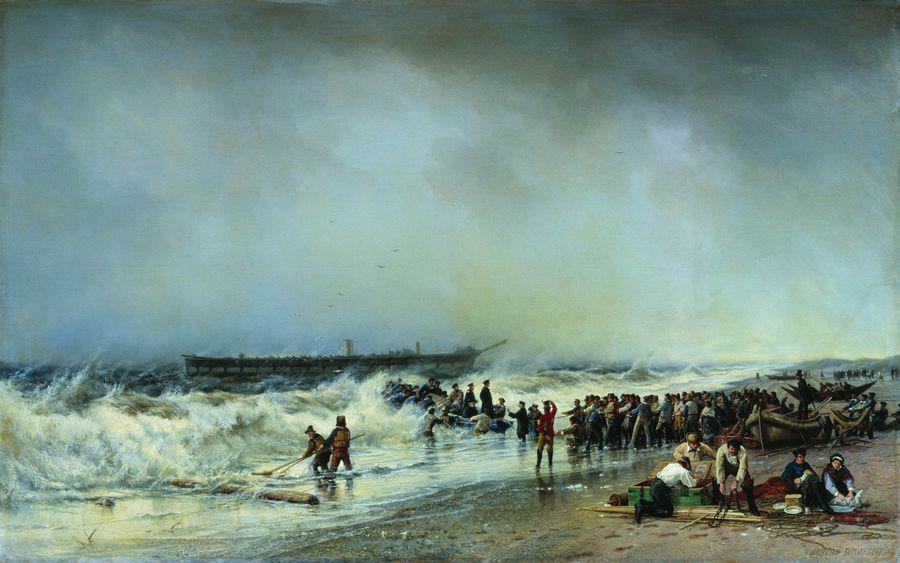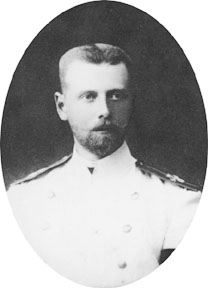by Susan Flantzer © Unofficial Royalty 2018

Photo Credit – Wikipedia
Natalia Sergeyevna Sheremetyevskaya was the morganatic wife of Grand Duke Michael Alexandrovich of Russia, the son the Alexander III, Emperor of All Russia and the brother of Nicholas II, Emperor of All Russia. Called Natasha, she was born on June 27, 1880, at a rented summer dacha outside of Moscow to Sergei Alexandrovich Sheremetyevsky and Yulia Vyacheslavovna Sventsitskaya. Natasha’s father was a lawyer and an untitled Russian noble. Natasha grew up in Moscow with maids, a nurse for her and her two older sisters, Vera and Olga, and then a French governess when the three sisters were older. Natasha and her sisters were educated at a private day school.
In 1901, Natasha married Sergei Ivanovich Mamontov (1877 – 1938), a musician. Sergei was a pianist and conductor at the Mamontov Opera House, founded by his uncle, and then at the famous Bolshoi Theater.
Natasha and Sergei had one daughter:
- Natalia Sergeevna Mamontova, known as Tata (1903 – 1969), married (1) Val Gielgud, writer, actor, editor and BBC producer, brother of actor Sir John Gielgud, no children, divorced (2) Cecil Gray, composer and music critic, had one daughter, divorced (3) Michael Majolier, naval officer, had one daughter

Natasha and her daughter Tata; Photo Credit – Wikipedia
Through her husband’s connections, Natasha became friendly with a number of Russian musicians including pianist and composer Sergei Rachmaninoff and opera singer Feodor Chaliapin. Natasha was quite social, enjoyed entertaining, and attending social events. Her husband Sergei was the opposite. He had a retiring nature and preferred to stay home. Natasha started going out on her own and met a childhood friend, cavalry officer Vladimir Vladimirovich Wulfert. Soon Natasha and Vladimir were in the midst of an affair and Natasha wanted a divorce so that she could marry Vladimir. Divorce was only possible in cases of adultery where the husband was the guilty party. Playing the gentleman, Sergei agreed to provide Natasha with the grounds for divorce and in 1905, Natasha and Vladimir were married.
Vladimir Vladimirovich Wulfert was an officer in Blue Cuirassier Regiment. The social life of an officer and his wife was just the life that Natasha desired, Vladimir enjoyed their social life as much as his wife did. The height of the regiment’s social season in 1907 was the winter ball and Grand Duke Michael Alexandrovich, the brother of Nicholas II, Emperor of All Russia and one of the commanders of the regiment, always attended the regiment balls. Natasha and Michael had met once before and Natasha wondered if he would remember her. Michael did remember her and over the course of the evening, he asked Natasha to dance and sat at her table.

Vladimir Wulfert, Natasha, and Grand Duke Michael; Photo Credit – Wikipedia
At first, Natasha was always accompanied by her husband when socializing with Michael. By August 1909, Michael and Natasha were lovers and by November 1909, Natasha was living in an apartment in Moscow paid for by Michael. Nicholas II had Michael transferred to the Chernigov Hussars 250 miles from Moscow in an attempt to stop the relationship. However, Michael traveled back to Moscow several times a month to see Natasha.
On August 6, 1910, Natasha gave birth to Michael’s son named George after Michael’s deceased brother. At the time of George’s birth, Natasha was still legally married to her husband and so George was legally his son. Michael and Natasha started divorce proceedings because they feared that Natasha’s husband would try to claim custody of their son. There is speculation that Vladimir Wulfert allowed the divorce because he received a bribe of 200,000 rubles. The date of the divorce was back-dated which meant that George was recognized as Natasha’s illegitimate son and would inherit her status. Nicholas II issued a decree giving George the surname Brasov after Michael’s estate at Brasovo. In May 1911, Nicholas II granted Natasha permission to use the surname Brasova and allowed her to live with Michael at his estate Brasovo. This all indicated Nicholas II’s tacit permission for his brother’s affair.

Natasha and Michael with their son George; Photo Credit – Wikipedia
Michael was second in the line of succession after his nephew, Tsesarevich Alexei. However, since Alexei suffered from hemophilia, it was thought that he would not live long enough to inherit the throne. Romanov House Law required that members of the Imperial Family obtain the permission of the Emperor before marrying. Michael knew that his brother would not grant permission to marry Natasha. In September 1912, Alexei suffered a life-threatening hemorrhage. Michael feared that Alexei would not survive and that he would become the heir which would make the possibility of his marriage to Natalia even more remote. By marrying Natasha before Alexei died, Michael would be removed from the line of succession early which would prevent him from losing Natasha. Therefore, while on holiday in Vienna, Austria, Michael and Natasha were married on October 16, 1912, in a Serbian Orthodox Church.
Nicholas II and the rest of the Imperial Family were horrifyingly shocked. They saw Michael’s actions as a betrayal of duty especially since Alexei was so close to death. (Alexei did survive the incident.) Nicholas stripped Michael of his military rank, froze all his assets in Russia, seized control of his estates, and banished him from Russia. Until September 1913, they stayed in grand hotels throughout Europe before settling in England.
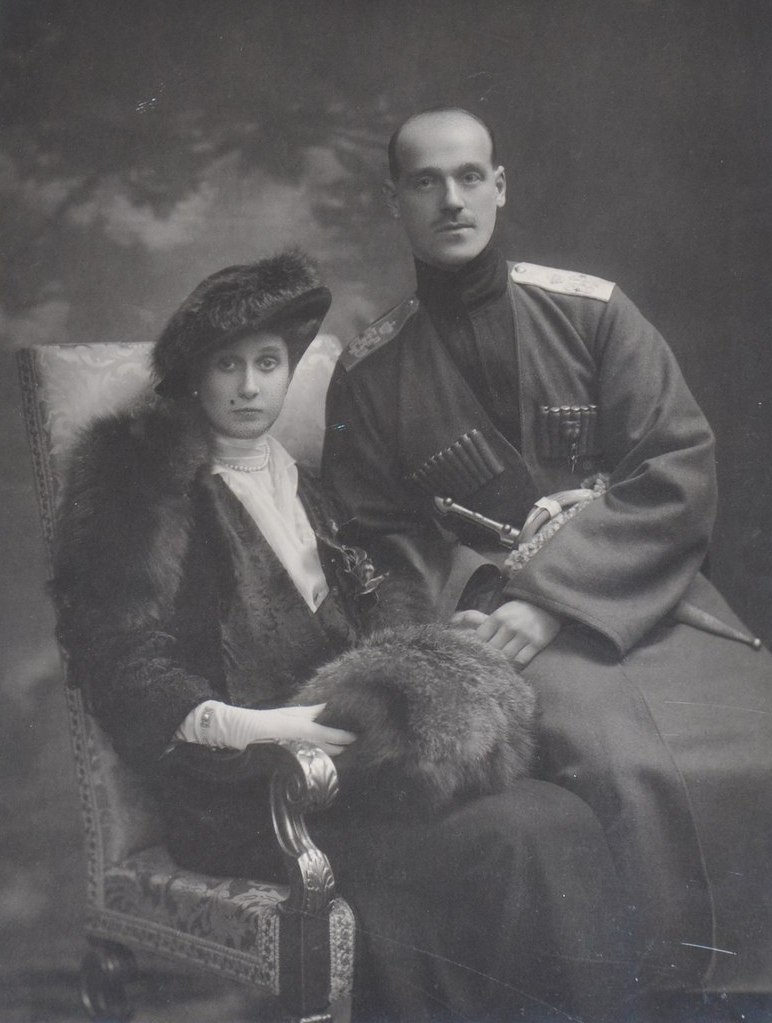
Natasha and Michael, circa 1912; Photo Credit – Wikipedia
Upon the outbreak of World War I in 1914, Michael asked his brother Nicholas II for permission to return to Russia and return to the army. He further requested that Natasha and George accompany him. Nicholas agreed with the condition that Natasha would not live in any of the imperial palaces. Michael, Natasha, and George lived in a villa on Nikolaevskaya Street in St. Petersburg. Michael was given command of the Caucasian Native Cavalry. In 1915, Michael requested that Nicholas II legitimize his son George so that in the event of his death in the war, George would be provided for, and Nicholas agreed. George was legitimized and created Count Brasov but neither he nor his descendants could be in the line of succession. At the same time, Natasha was created Countess Brasova.
The February Revolution was the first of two revolutions that took place in Russia in 1917. The February Revolution was caused by military defeats during World War I, economic issues, and scandals surrounding the monarchy. The immediate result was the abdication of Nicholas II, the end of the Romanov dynasty, and the end of the Russian Empire. Later in 1917, the October Revolution occurred, paving the way for the establishment of the Soviet Union.

Natasha in 1917; Photo Credit – Wikipedia
After going through several periods of house arrests, Michael was arrested on March 7, 1918, along with his British secretary Nicholas Johnson, and imprisoned at the Bolshevik headquarters in St. Petersburg. Four days later, Michael and Johnson were sent to Perm, a thousand miles to the east. In Perm, the Bolshevik orders were that “Michael Romanov and Johnson are entitled to live in freedom under the surveillance of the local Soviet authorities.” Concerned for her son’s safety, Natasha smuggled George and his nanny out of Russia to Denmark with the help of the Danish Embassy.
Natasha obtained a travel permit so she could join Michael in Perm. However, Michael and Natasha’s reunion did not last long. Because the Bolsheviks and the White Army were fighting in the area, Michael and Natasha feared that she could become trapped in Perm in a dangerous situation and so Natasha left on May 18, 1918, for Moscow. On June 13, 1918, Michael and his secretary were taken to the woods near Perm and shot. Their bodies have never been found.

Grand Duke Michael and his secretary Nicholas Johnson in Perm, April 1918; Photo Credit – Wikipedia
Returning to Petrograd, which was the new name for St. Petersburg, Natasha immediately began to plan a second trip to be with Michael but she received a telegram from Perm about his “disappearance”. When she met with the Cheka, the Soviet secret police, Natasha accused them of killing Michael and she was put in prison. Ten weeks later she feigned illness and was transferred to a nursing home from which she managed to escape. The Germans believed the widespread rumors that Michael was still alive and decided to help Natasha escape Russia in an attempt to gain influence with Michael. Through the German-controlled Ukrainian consulate, Natasha and Tata, her 15-year-old daughter from her first marriage, were provided with false passports. They then traveled to Kiev which was under German occupation and on to Odessa where they boarded the British ship HMS Nereide which took them to Constantinople.

George, Count Brasov; Photo Credit – Wikipedia
Natasha and her children settled in England. George attended a British boarding school and Tata attended a convent school in France. Natasha was able to use money in Michael’s bank accounts in Paris and Copenhagen, and also started selling her jewelry. In 1920, Tata was sent to Cheltenham Ladies’ College and George was enrolled at Harrow School. In England, Natasha had a courteous meeting with Michael’s mother Empress Maria Feodorovna (born Dagmar of Denmark) who had also escaped and would live out her life in her native Denmark. There were still conflicting rumors about Michael’s fate.
In 1924, Natasha had Michael declared legally dead. Michael’s first cousin Grand Duke Kirill Vladimirovich, who also escaped, had declared himself Emperor and head of the Romanov family. He gave Natasha the style and title Her Serene Highness Princess Romanovskaya-Brasova and made George a Prince. Natasha moved to Paris in 1927 because it was cheaper to live there and a large Russian émigré population lived there. Tata, who had married, remained in England. George joined his mother in France and attended the Sorbonne University in Paris.
In 1928, Michael’s mother Empress Maria Feodorovna died in Denmark and the house that she owned jointly with her sister was sold. The proceeds were equally divided between the Empress’ two daughters and her grandson George who used some of the money to buy a new sports car. In July 1931, George had finished his university exams and went on a driving holiday in the south of France with a friend. Not too far from Paris, in Sens, France, George’s car skidded off the road and crashed into a tree. George’s friend, who had been driving, was instantly killed. George was taken to the hospital with two broken legs and severe internal injuries. Natasha reached George’s bedside before he died on July 21, 1931, without regaining consciousness. He would have celebrated his 21st birthday in two weeks. George was buried at the Passy Cemetery in Paris. Although George had no succession rights due to the morganatic marriage of his parents, he was the last male-line descendant of Alexander III, Emperor of All Russia.
Natasha continued to have financial difficulties. Recovering any Romanov assets in the Soviet Union, formerly Russia, was impossible. Natasha unsuccessfully attempted to recover some of Michael’s Polish assets. She did receive some funds from Michael’s German assets but inflation had made them almost worthless. To survive, Natasha sold her possessions. By the time World War II started, Natasha was nearly broke and living in a one-room attic apartment. Tata was living in London and the war made travel and communication with her mother in Paris impossible. In 1946, Tata’s daughter Pauline went to Paris to find her grandmother and was shocked by her grandmother’s living conditions. The Mamontov family, the family of Natasha’s first husband, did what they could for her. Sometimes other émigrés from Russia living in Paris gave her money and Pauline started sending her grandmother money from her small salary. In 1951, Natasha found out she had cancer and her landlady evicted her. Natasha was taken to the Laënnec, a charity hospital in Paris, France, where she died on January 23, 1952, at the age of 71.
Natasha was buried in Passy Cemetery in Paris, France next to her son George. Their grave is marked by a Russian Orthodox cross and the inscription Fils et Epouse de S.A.I Grand Duc Michel de Russie – Son and Spouse of His Imperial Highness Grand Duke Michael of Russia.

Natasha and George’s grave; Photo Credit – By Thomon – Own work, CC BY-SA 4.0, https://commons.wikimedia.org/w/index.php?curid=42995429
This article is the intellectual property of Unofficial Royalty and is NOT TO BE COPIED, EDITED, OR POSTED IN ANY FORM ON ANOTHER WEBSITE under any circumstances. It is permissible to use a link that directs to Unofficial Royalty.
Works Cited
- Crawford, R. and Crawford, D. (2000). Michael and Natasha. New York: Post Road Press.
- En.wikipedia.org. (2017). Grand Duke Michael Alexandrovich of Russia. [online] Available at: https://en.wikipedia.org/wiki/Grand_Duke_Michael_Alexandrovich_of_Russia [Accessed 4 Nov. 2017].
- En.wikipedia.org. (2018). Natalia Brasova. [online] Available at: https://en.wikipedia.org/wiki/Natalia_Brasova [Accessed 15 Mar. 2018].
- Perry, J. and Pleshakov, K. (2008). The Flight of the Romanovs. New York: Basic Books.
- Ru.wikipedia.org. (2018). Михаил Александрович (сын Александра III). [online] Available at: https://ru.wikipedia.org/wiki/%D0%9C%D0%B8%D1%85%D0%B0%D0%B8%D0%BB_%D0%90%D0%BB%D0%B5%D0%BA%D1%81%D0%B0%D0%BD%D0%B4%D1%80%D0%BE%D0%B2%D0%B8%D1%87_(%D1%81%D1%8B%D0%BD_%D0%90%D0%BB%D0%B5%D0%BA%D1%81%D0%B0%D0%BD%D0%B4%D1%80%D0%B0_III) [Accessed 15 Mar. 2018].
- Ru.wikipedia.org. (2018). Шереметьевская, Наталья Сергеевна. [online] Available at: https://ru.wikipedia.org/wiki/%D0%A8%D0%B5%D1%80%D0%B5%D0%BC%D0%B5%D1%82%D1%8C%D0%B5%D0%B2%D1%81%D0%BA%D0%B0%D1%8F,_%D0%9D%D0%B0%D1%82%D0%B0%D0%BB%D1%8C%D1%8F_%D0%A1%D0%B5%D1%80%D0%B3%D0%B5%D0%B5%D0%B2%D0%BD%D0%B0 [Accessed 16 Mar. 2018].

